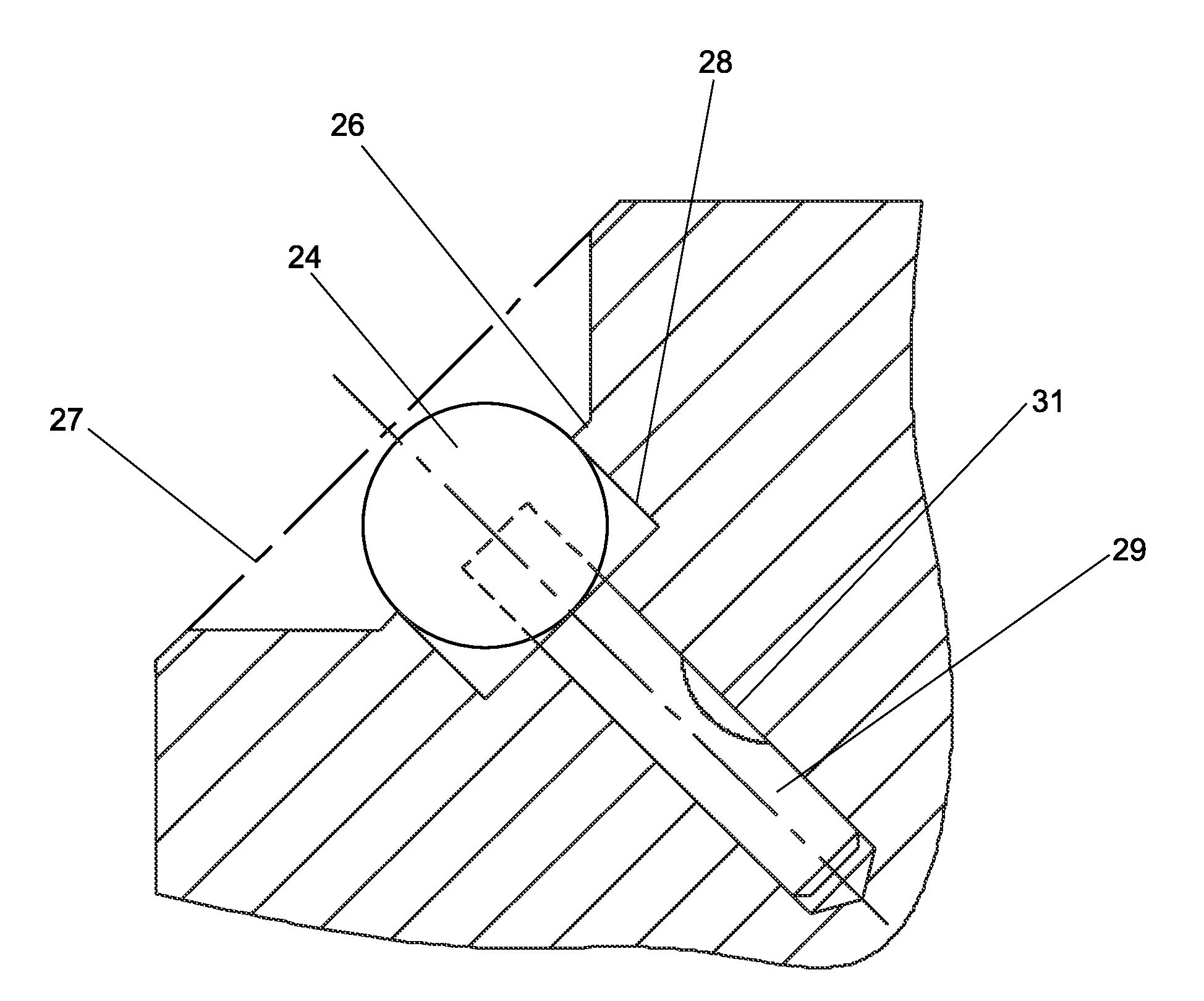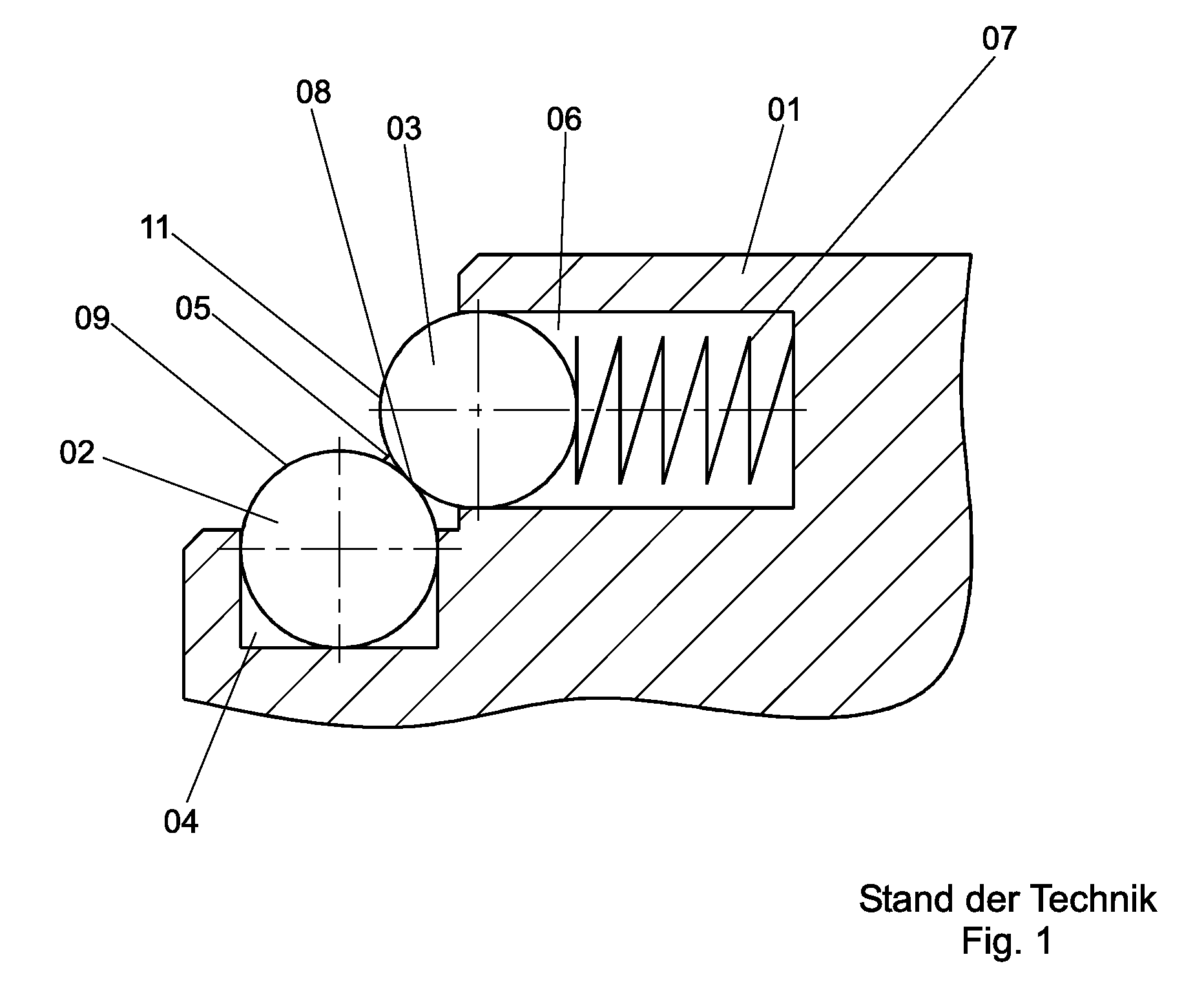Tool holder for adapting a tool for its measurement and measuring arrangement and method for its calibration
a technology of tool holder and calibration method, which is applied in the direction of measuring/indication equipment, metal-working equipment, instruments, etc., can solve the problems of only being able to correct errors to a limited extent, affecting the measurement of calibration features negatively, and uncertainties in the optical identification of calibration features. , to achieve the effect of avoiding follow-up costs that arise from erroneous calibration, limited accuracy in the measurement of tools, and high degree of accuracy
- Summary
- Abstract
- Description
- Claims
- Application Information
AI Technical Summary
Benefits of technology
Problems solved by technology
Method used
Image
Examples
Embodiment Construction
FIG. 1 shows a calibration feature with two spheres according to the state of the art, which is discussed above.
FIG. 2 shows a preferred embodiment of a tool holder according to the invention in the form of an adapter. The adapter is designated for being fixed in a rotatable spindle of a tool presetter (not shown) and to adapt a tool that is to be measured. Initially, the adapter includes a cylindrically symmetric base body 20 that is to be fixed in the spindle by its outer surface. The base body does not necessarily need to be cylindrically symmetric, but can, for example, be formed as a triangular shape of constant width.
The cylindrically-symmetric base body 20 has an inner cavity 21 which is also formed to be cylindrically symmetric and serves the adaption of the tool that is to be measured. A symmetry axis 22 of the cylindrically-symmetric base body 20 is design to form a rotational axis around which the adapter, the spindle and the tool to be measured will rotate in order to me...
PUM
 Login to View More
Login to View More Abstract
Description
Claims
Application Information
 Login to View More
Login to View More - R&D
- Intellectual Property
- Life Sciences
- Materials
- Tech Scout
- Unparalleled Data Quality
- Higher Quality Content
- 60% Fewer Hallucinations
Browse by: Latest US Patents, China's latest patents, Technical Efficacy Thesaurus, Application Domain, Technology Topic, Popular Technical Reports.
© 2025 PatSnap. All rights reserved.Legal|Privacy policy|Modern Slavery Act Transparency Statement|Sitemap|About US| Contact US: help@patsnap.com



